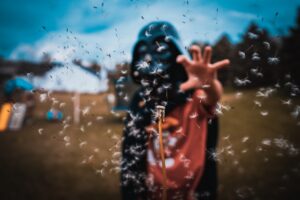
If you haven’t read Episode 1, you can see it here, but I finished it off with the grand statement “next time we will examine the role of the Executive system, why some people develop “protective mechanisms” against mental illness and why some don’t”
As I sat down to write today, several months after I wrote Episode 1, I looked aghast at that gargantuan statement. Clearly it’s not just our Executive functions in the brain that provide protection against the possible destabilising features of creativity, but let’s start there…
A succinct description of our brains Executive System could be:
“an umbrella term for the management (regulation, control) of cognitive processes, including working memory, reasoning, task flexibility, and problem solving as well as planning and execution” (Wikipedia accessed 7/2/15)
In Carson’s “Shared Vulnerability” Model of Creativity (2011) she explores and explains how things like high IQ, increased working memory and cognitive flexibility provide a balancing (my word) and perhaps protective force for creative people. She continues saying that these factors “enlarge the range and depth of stimuli available in conscious awareness to be manipulated and combined to form novel and original ideas”.
You know I get that, but the bit that interests me is how highly creative people, with a tendency perhaps for mood disorder, are able to protect themselves, whilst remaining open to creativity. It’s a fine line – a balancing act akin to walking a tightrope, hence the tagline of my business “Craft Your Life – walking the tightrope of creativity, work and life”
In fact it’s not just important for people with a predisposition to psychopathology – the tightrope to which I refer is relevant for all of us who seek to create. It’s a balancing act at all times between the stuff on the left of this table and the stuff on the right:
The Creativity Tightrope
| Uncertainty, freedom and variety, necessary for creative ideas | V | Needing certainty, security and habits as basic human requirements |
| Allowing our minds to wander and loosen up to allow creativity | V | Focussing enough to develop an idea and/or complete something |
| Letting our imagination run riot | V | Figuring out what is “real” and what is not NB Psychosis/Anxious thoughts |
| Allowing ourselves to play and not attaching to the outcome | V | Feeling our work is of value and fending off low self-esteem/confidence |
| Embracing random thoughts and slightly weird ideas | V | Having the capacity to evaluate/assess the idea or its value |
| Allowing creative diversions | V | Deciding whether it is a distraction |
| Allowing enough helpful percolation | V | Moving out of unhelpful procrastination |
| Embracing both the creative voids and periods of creative fervour | V | Developing the awareness and resilience to manage both |
In this list we can clearly see the roles of the Executive system: regulation, control, reasoning, task flexibility, planning and execution. What I don’t see is the protection needed in terms of emotional vulnerability – how do we deal with the loneliness of creating, the self-doubt and feelings of not fitting in! Perhaps we will look at that next time.
In this table, you start to see the middle ground – the bits that are “shared” by both creative people and those with psychopathology. To Carson (2011) they are Preference for Novelty (the variety, diversity and raw materials needed to create), Hyper-connectivity (the ability to form connections, both in our minds and between people/organisations) and Attenuated Latent Inhibition (the ability to screen out stimulus, or in this case allow in more, unfiltered stimuli).
To me, these factors are the tightrope itself – we need to walk along it to expose ourselves to these things necessary for creativity – novelty, diversity, randomness, connection, relaxation etc. In doing so, we make ourselves vulnerable and take ourselves out of usual thinking, environments, circumstances and actions – it’s a risk. How do you manage to walk this tightrope?
References
Carson S (2011) Creativity and Psychopathology: A Shared Vulnerability Model Canadian Journal of Psychiatry 2011 56 (3) p144-153
Accessed here : http://scottbarrykaufman.com/wp-content/uploads/2013/10/Carson-IR.pdf







No comment yet, add your voice below!